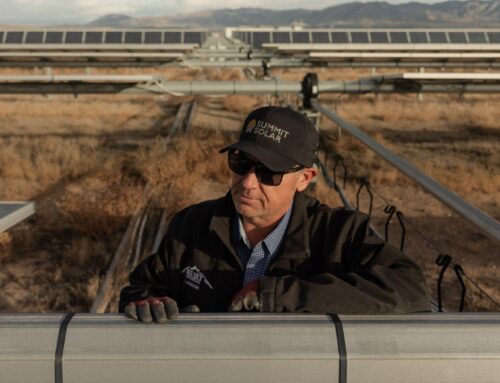Jerry Shenk: Wind and solar ‘farms’ are not farms
March 30, 2025

Current wind and solar power technologies are among the least sensible, most environmentally destructive ways of generating minimal amounts of intermittent electricity ever devised. Both are ridiculously expensive and inherently unreliable.
Only the left’s monomaniacal commitment and government-sponsored “renewable energy” subsidies sustain alternative energy sources.
Fortunately, the new administration appears to understand that 1) wind and solar make little sense other than as niche resources in off-the-grid applications and 2) activist-hyped “climate change” isn’t killing anyone.
According to the Energy Institute’s 2024 Statistical Review of World Energy, in 2023, world-wide power requirements were met by coal generation (32 percent), natural gas (26 percent), oil (23 percent), nuclear (4 percent), hydro (6 percent,) and “other renewables,” primarily wind and solar, but some biomass and geothermal (8 percent).
The math: carbon-based fuels – coal, natural gas, and oil – met 81 percent of the world’s energy demands. Nuclear and hydro, the “cleanest” sources, accounted for 10 percent. “Other renewables” made up only about 8 percent, despite nations having cumulatively spent $trillions on energy transition.
Pennsylvania’s ample natural gas and low-sulfur coal assets have long been under assault by climate activists and alt-energy subsidy-seekers, even though the value proposition of solar and wind is economically indefensible. Power generated from the latter is far less reliable and more expensive than that provided by carbon-based fuels, nuclear and hydro, and retiring carbon-based fuel generation threatens grid reliability.
If either “renewable” source were effective and cost-competitive, they would not need subsidies.
Last year, greedy alt-energy interests ran radio ads in Pennsylvania encouraging farm families to surrender their acreage to “solar farms,” alleging that “Solar farms are farms, too.”
They are not.
Alt-energy propagandists: “Farms look bucolic enough on the outside, but beneath those amber waves of grain is formerly virgin land that has been stripped of its natural state, robbed of its biodiversity, commercialized, and industrialized for generations with machines, herbicides and pesticides.”
However, they never mention how, precisely, solar arrays restore “formerly virgin land” to “its natural state” or recreate “biodiversity.”
They do neither.
Alt-energy installations are not “sustainable environmentalism.” They are merely corporate land grabs. The vast majority of wind and, especially, solar arrays devouring prime farmland reduce farmland acres. They risk being destroyed by bad weather, damaging the soil and/or ending up in landfills in 20 to 25 years.
Solar panels and wind turbines are not recyclable, so when they are damaged or inevitably retired, additional acreage must be dedicated to disposing of them. Perhaps massive landfills are now “farms,” too.
Furthermore, both wind turbines and solar arrays affect wildlife and kill birds, plus offshore wind turbines disrupt the habitats of marine species, especially whales.
Alt-energy installations are also taking productive grazing lands, including federal Bureau of Land Management property on which ranchers pay for grazing rights. Such conversions are negative economic two-fers: the Treasury loses grazing revenues while dispensing taxpayer-funded subsidies.
Worse, wind and solar intrusions on farms, prairies and grazing lands threaten the nation’s food supply and hurt family budgets.
The Law of Supply and Demand dictates that, when supply – in this case, of food – drops, and demand remains static or increases, prices increase.
Accordingly, converting farm and grazing land to “renewable” power generation increases energy and food costs at the expense of taxpayers and household budgets. Wind and solar repurpose land from food to inedible, intermittent energy production, and drive up household grocery bills.
There’s been substantial, primarily aesthetic public backlash to solar and wind installations. Neither are what one might consider “attractive.” While farmland and grazing acreage can be scenic, solar and wind arrays blight the landscape. Only the people who harvest the grift like looking at them, and few of them live nearby.
Online data indicates that “from 2000 onwards, the total area of land in U.S. farms has decreased annually, aside from a small increase in 2012. Over the time period…, the total farmland area has decreased by over 66 million acres, reaching a total of 878.6 million acres as of 2023.”
By changing the nation’s energy focus, President Donald Trump is delivering on his campaign promise to unleash energy dominance and lower the cost of living using conventional, far less intrusive and costly, more reliable and efficient energy assets that meet energy demand on far smaller footprints without affecting food security.
Contact columnist Jerry Shenk at jshenk2010@gmail.com
Search
RECENT PRESS RELEASES
Related Post








